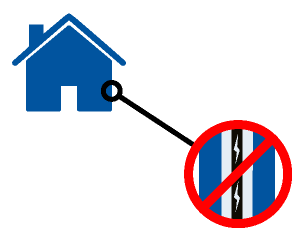Categories
- Wire & Cable
- Multi-conductor & Signal Cable
- Battery Cable Assemblies
- Terminals and Connectors
- Electrical Parts
- Electrical Tools
- ID Products
- Wire Management
- Tape & Sealant
- Mounting Panels & Panel Blanks

Need Help?
Click HereGet a Business Account
Apply HereSpeaker Wire
What is speaker wire?
Speaker wire is a type of parallel-bonded electrical wire used to create electrical connections between audio equipment and loudspeakers. Built with two finely stranded conductors, each individually insulated by PVC, it can be used in everything from digital audio, stereo speakers, jukeboxes, home theaters, and more. Pacer speaker wire is constructed from finely stranded bare copper wire. Both conductors are then given a durable tin coating, which offers resistance from corrosion and oxidation. Once the conductors are ready, they are then insulated with a premium clear PVC jacket. The jacket is made to be highly resistant and durable to a range of environmental factors.
"Built with two finely stranded conductors, each individually insulated by PVC, it can be used in everything from digital audio, stereo speakers, jukeboxes, home theaters, and more."
How do I strip speaker wire without damaging the internal conductors?
To correctly strip Pacer speaker wire without damaging the conductors, you only need one simple-to-use tool. Pacer offers a 6" compact wire stripper designed to cut and strip wires from 20 AWG to 10 AWG. Once you have the correct tool, you will want to cut the wire to the proper length. Now you can easily separate the wires by pulling them apart, giving you access to the individual conductors. Next, you'll want to line up the wire into the proper stripping nest based on the wire gauge. So the 14 AWG speaker wire goes into the nest with 14 above it, simple enough. All you need to do now is close the tool and pull the tool away from the wire.
Where is speaker wire implemented?
Pacer speaker wire is implemented in marine vessels, automotive applications, and in-home setups as well. Oftentimes we sell our speaker wire to OEMs who are building new products, and we also sell our speaker wire to individuals who want to redo their car stereo or home theater systems. How do you know if you need to replace your speaker wire? The most obvious sign is damage to the insulation or conductors. Is your speaker wire faded? Is your speaker wire cracking? Whatever the issue may be, it is best to replace your speaker wire when needed. All you will need are the proper cutting tools, the proper wire stripping tools, and the correct connectors. Let us take a look at where you might use speaker wire.
Where can I use speaker wire?
As stated above, speaker wire is ideal for digital audio, jukeboxes, home theater systems, and stereo speakers, as well as automotive sound equipment and marine audio equipment. It is manufactured to be used in a multitude of possible locations and applications. Pacer speaker wire is designed with flexibility and durability in mind, making it ideal for situations where space is limited. Wiring can occur in tight spaces where using a rigid, stiff wire will make installation a much more complex process. This is why you always want to be sure to choose the correct wire for the task at hand. Why fight with a rigid, stiff wire when you can use a finely stranded wire that was built for flexibility?
![]()
Audio
Equipment
![]()
Marine
Audio
![]()
Digital
Audio
![]()
Stereo
Speakers
![]()
Home
Theaters
Where should I avoid using speaker wire?

Pacer speaker wire is very versatile with the range of applications it is designed to handle. There are, however, certain situations where you would not want to use speaker wire. Most types of speaker wire are not designed for in-wall use. Just like it sounds, this means that this type of wire should not be run in-between walls within a building. Although it is ideal for marine, automotive, and home usage, using it inside of walls is not recommended. Not to worry, though, as Pacer speaker wire carries a translucent insulation, meaning that it blends better into the environment than opaque insulation.
Why is the insulation transparent?
Many wire manufacturers use opaque insulation as it is a cheaper option for them. All of Pacer's speaker wires carry translucent PVC insulation, and this is done for several reasons. First off, translucent PVC insulation allows the user to visually inspect the internal conductors for signs of damage or corrosion. This fact alone makes translucent insulation extremely beneficial. Being able to inspect wires that will be exposed to environmental hazards makes the maintenance process much simpler. Secondly, using clear insulation is less visually intrusive than opaque insulation. This is especially true when running speaker wire openly through a room. Transparent insulation allows the wire to blend seamlessly with the environment. Regardless of the color of the background, transparent insulation offers more subtlety. Pacer works to make each product as efficient and streamlined as possible. It is simple steps we took like this to make the installation and maintenance processes much easier.

What sizes are available?
Pacer manufactures and carries speaker wires in a range of sizes. Currently, we offer speaker wire in 14 AWG, 16 AWG, and 18 AWG to meet the widest range of potential uses. Rather than offering multiple gauge sizes not suited for practical applications, we decided to focus on the most useful sizes and refine those to make them the most efficient for our customers.

14 AWG
0.0641"
1.63mm

16 AWG
0.0508"
1.29mm

18 AWG
0.0403"
1.02mm
How do I select the correct speaker wire for my application?

The type of speaker wire that you should choose is based on a few different factors. You will need to consider how much power your application needs, as different pieces of equipment require different amounts of power to operate properly. Additionally, you will need to factor in exactly how long you will need your wire run to be. The longer a wire is, the more power you will need to get your current where it needs to go. This can mean that you may need a larger wire gauge to carry the current. Always remember to add a few extra feet to your run, as it gives you a margin for error, and you can always trim it off at the end. For more on voltage drop and how to calculate it, click here.
How long of a run of speaker wire is right for my project?
As we said above, the longer the distance, the larger the wire size you will need. To know which size of wire you will need, we must consider the length of the run. Knowing the distance allows you to figure out the gauge needed by the power required. Consider the following scenario. Let’s say you are running the wire along a short length to an 8-ohm speaker; then a 16-gauge speaker wire will do the trick. If you need to run more than 50 feet, then you would want to use 12-gauge or 14-gauge speaker wire. Remember, as we said before, it’s a good idea to add a few extra feet to provide slack and to allow for error. Trust us when we tell you, the last thing you want is to cut 80 feet of speaker wire only to discover that you need 82 feet.

What compliances does this wire meet?

Pacer speaker wire is designed to meet the RoHS Compliant Directive 2002/95/EC, meaning that it carries as little hazardous material as possible. RoHS, which means restriction of hazardous substances, is a sign of safety when it comes to handling certain products. This quality makes it even safer to work with than other, non-compliant wires. Using material like this decreases long-term risk associated with usage. When you see the RoHS logo on a product, it not only means that the product has restricted use of hazardous materials; it also means that the manufacturer and retailer have taken the time to offer you the safest products possible.
*This page was updated on 1/30/2025*



